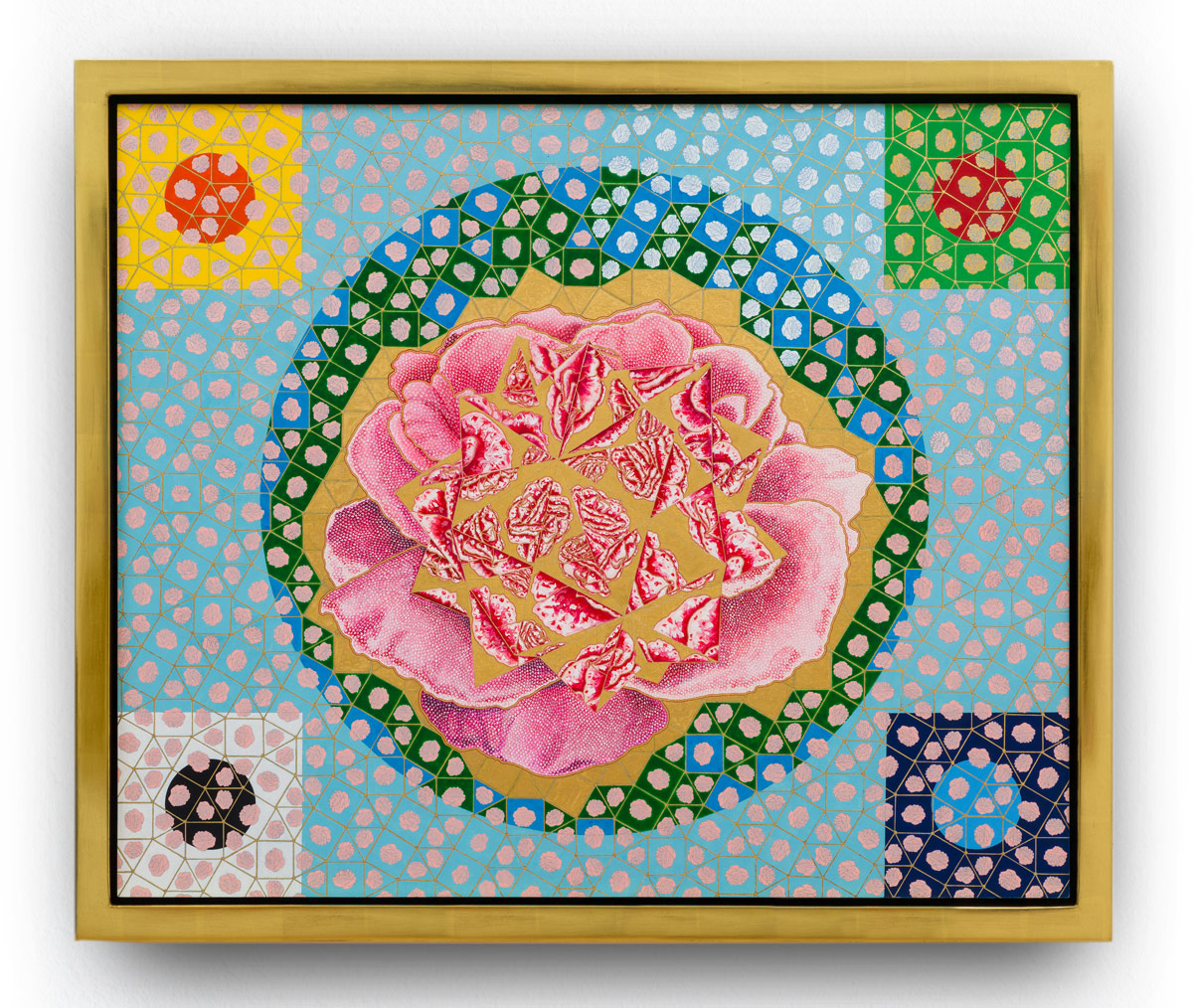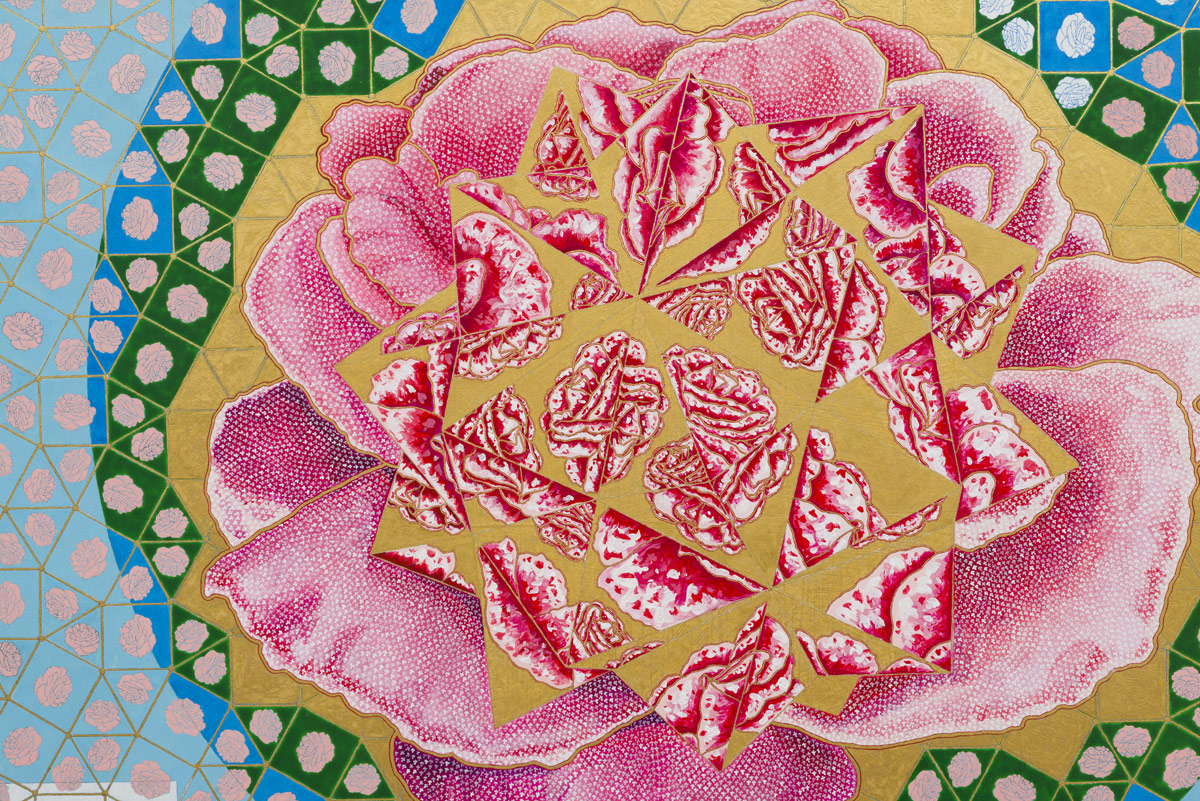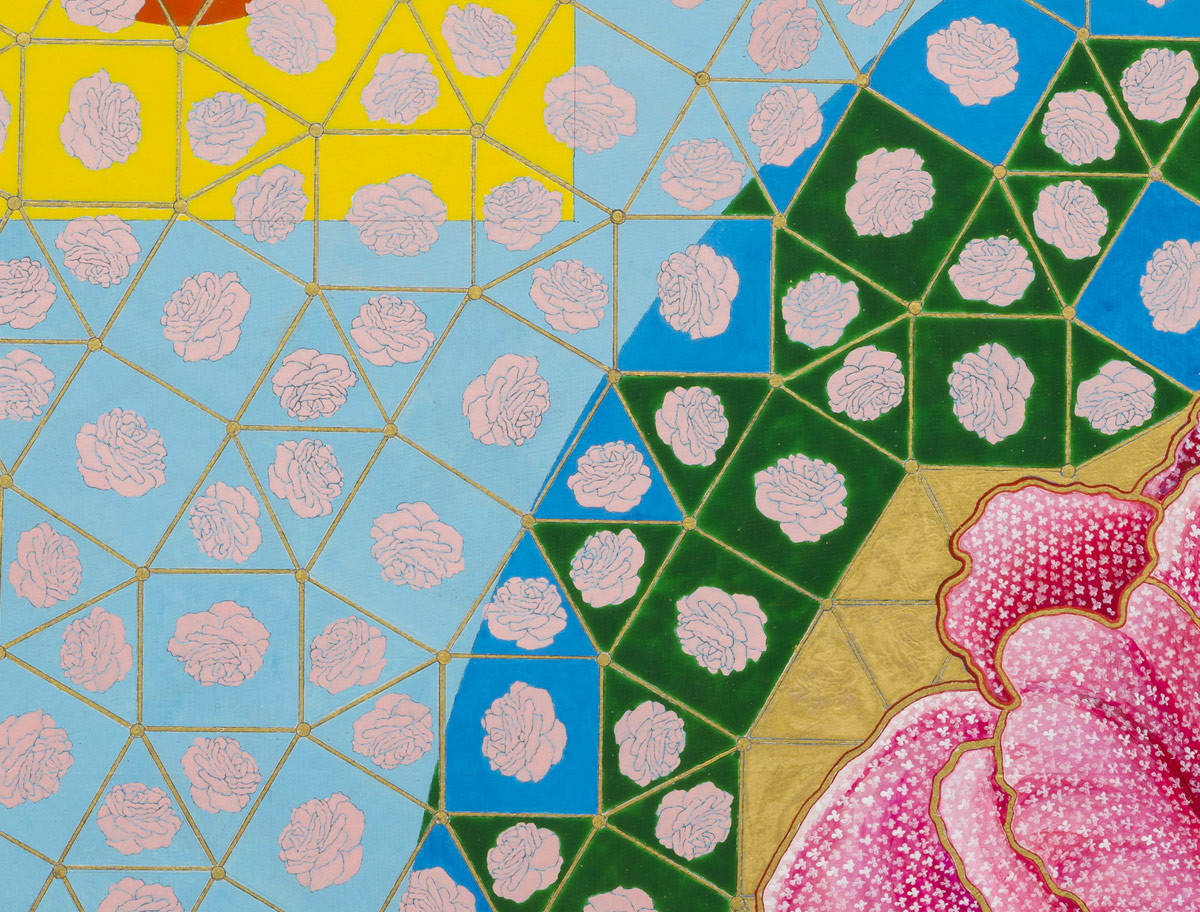

Title
One Hundred Trillion Concentrations
Medium
acrylic, 22 karat gold, gum arabic on rice paper over wood panel
Dimensions
30 x 36 in.
(76.2 x 91.4 cm)
framed:
33 ¼ x 39 1/8 in.
(84.5 x 99.4 cm)
Year
2015
The concept behind this work was first developed in Rain of Celestial Flowers, which served as a study for this painting (see Rain of Celestial Flowers for descriptions of the forms’ symbolic representations). Not only is there a greater complexity of imagery from that of the study, there is also an infusion of visual elements akin to traditional mandala depictions.
In his book The Theory and Practice of the Mandala, Tibetan scholar Giuseppe Tucci describes mandalas as “complex arrangements of patterns or pictures used in Hindi and Buddhist Tantrism to represent the cosmos and to give expression to the infinite possibilities of the human subconscious.”
Mandalas often feature a deity at the center surrounded by a retinue of beings that are painstakingly rendered within elaborate rectilinear and circular constructions. In One Hundred Trillion Concentrations, Wudl has integrated similar visual devices: The composition builds exponentially around a flower with a faceted gem at its core. This central form represents consciousness itself.


The title One Hundred Trillion Concentrations was chosen to illuminate the following:
-The infinite variety of meditation practices and the infinite nuances within the specific meditation practices that accommodate the temperamental differences of all individuals.
-The continual return and recommitment to attention during each period of meditation due to the uncontrollable stream of mental activity that interrupts concentration.
-The continued return and sustained attention and determination to meet the challenge of initiating the painting and carrying it through to its conclusion.
For Buddhist practitioners, mandalas serve as a visual aid to meditation. However, in conceptualizing this work, it was not the artist's intent to produce a tool for meditation, but rather to create a visual response inspired by mandala imagery, the descriptions in the Avatamsaka Sutra, and the significance of meditation in his daily practice.


